V
Vedant Pathak
Guest
In 2004, when the United Progressive Alliance (UPA) came to power, India had a trade surplus of $1.75 billion with China. However, within a decade under the UPA regime, this turned into a whopping $38 billion deficit, largely due to ambitious trade targets set by the government.

Indo-China Trade in 2004 | PC- ET
In 2005, Prime Minister Manmohan Singh set a target of $20 billion in bilateral trade after a visit by the Chinese Premier. However, this target was achieved ahead of schedule. Subsequently, during the Chinese President’s trip to India in 2006, PM Singh raised the trade target to $40 billion.
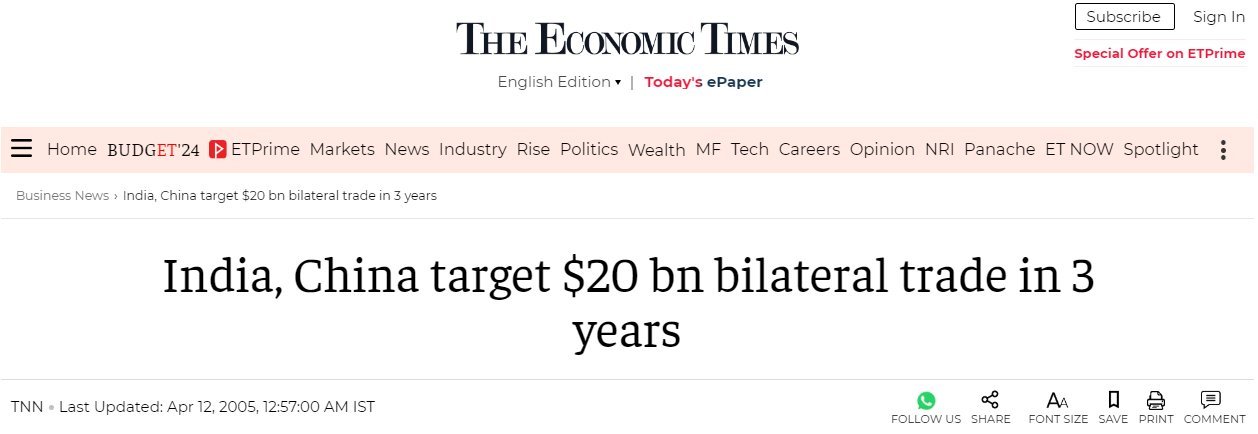
2005 Scenario | PC – ET
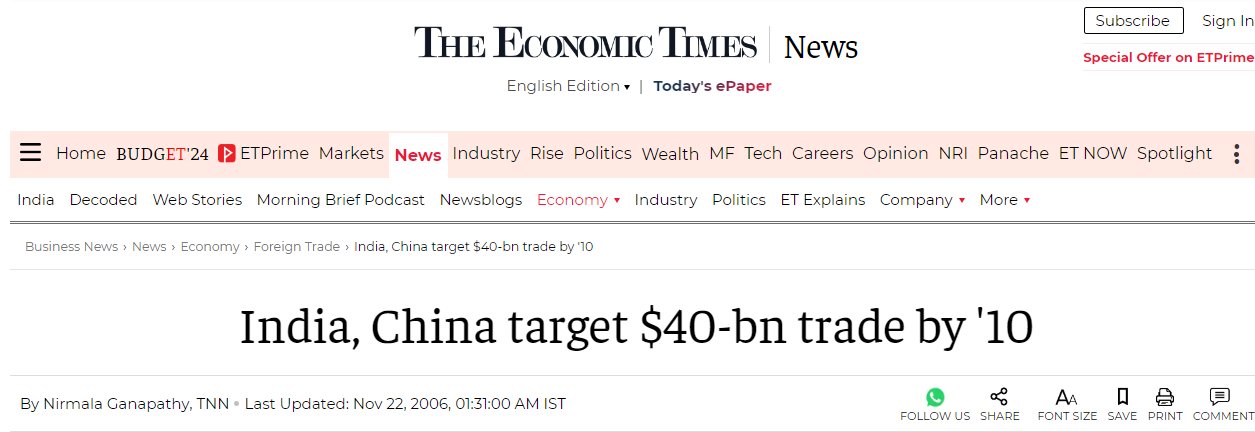
2010 Outlook | PC – ET
Yet again, the revised target was met before the deadline. Emboldened, PM Singh further increased the target to $60 billion during his 2008 China visit. But even this was exceeded rapidly. Hence, when the Chinese President visited in 2010, Manmohan Singh set an ambitious $100 billion trade target, despite concerns over border intrusions by China.
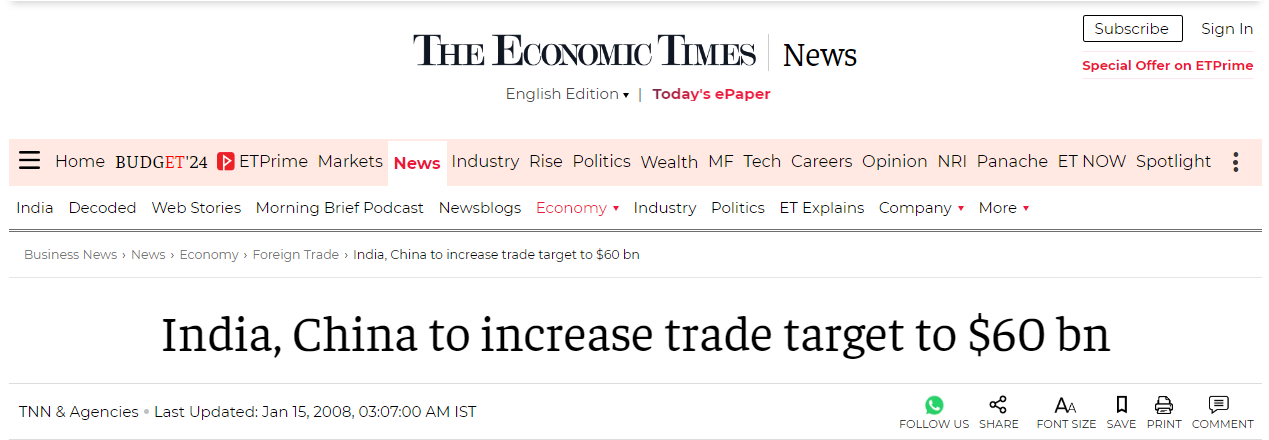
The 2008 China Visit | PC – ET
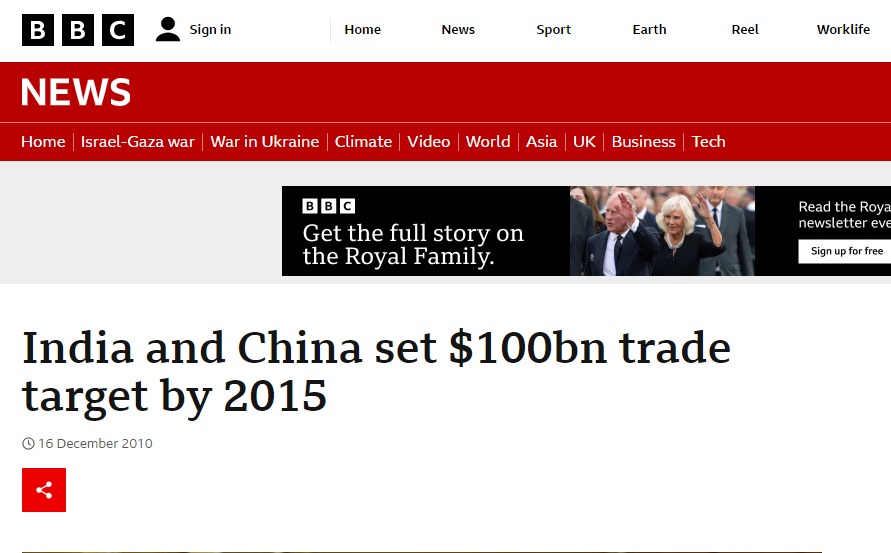
PC – ET
By frequently revising bilateral trade targets upwards, the Indian government opened the floodgates for Chinese goods to pour into the country.
Even when Indian manufacturers complained of surging Chinese imports, the UPA government remained complacent. PM Singh assured Parliament in 2011 that they had exaggerated the national security implications of trade deficits. In reality, India’s manufacturing sector struggled to compete against cheaper Chinese goods.
The UPA regime’s lofty trade targets led to lopsided trade relations without seeking reciprocal market access for Indian companies in China. While they threw open Indian markets to Chinese companies, China continued with barriers to Indian investments. Thus, ambitious top-down trade targets, set without considering ground realities, led India into a trade deficit spiral. This made India reliant on China for crucial items like electronics and pharmaceutical ingredients, raising economic and security challenges. Tying trade to diplomacy without business reciprocity proved detrimental for the country.
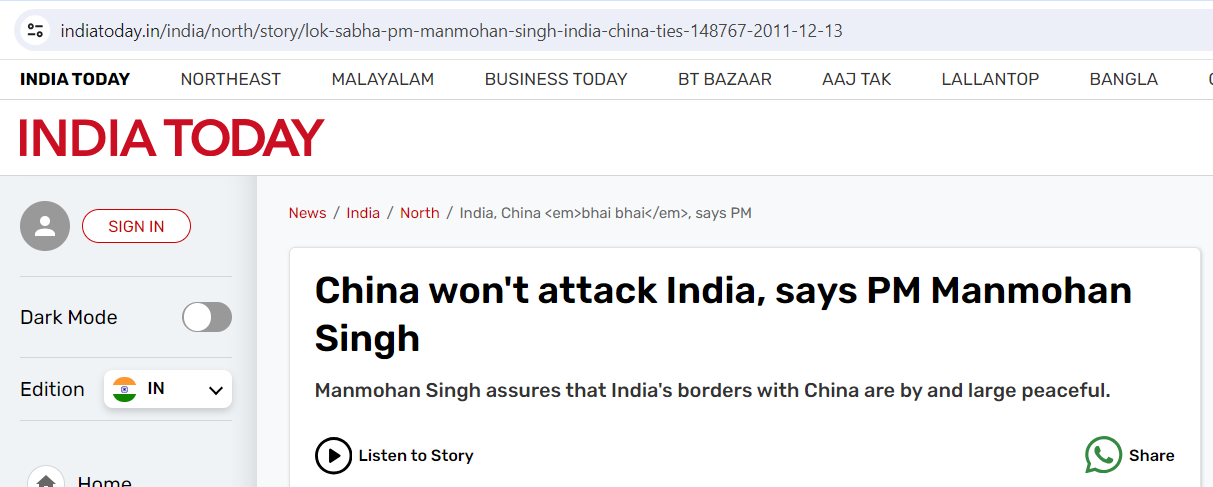
The Modi government has taken several steps to address the trade deficit with China. India’s government think tank, NITI Aayog, initiated a study to develop a comprehensive action plan aimed at bridging India’s trade deficit with China. The study aimed to analyze India-China trade trends, supply chains, and product categories where India has a competitive advantage.
The government also focused on boosting domestic production and productivity in sectors comparable to the global economy, not only to reduce the trade deficit with China but also to capitalize on global supply chain shifts. This included examining the type and quantum of foreign investment that may bridge the technology gap and utilize the abundant domestic manpower for competitive products.
Furthermore, the government sought to address tariff, non-tariff barriers, the regulatory ecosystem, and market access concerns for Indian exports to China. The aim was to reduce India’s dependency on Chinese imports and instead promote Indian goods in the Chinese market.
These measures, along with a focus on attracting global supply chains to India, have been instrumental in gradually reducing the lopsided dependence built over 2004–2014. The Modi government’s approach has been more balanced, promoting two-way trade and setting targets based on realistic capacity on both sides. This has helped in controlling the trade deficit and reducing India’s dependence on China.
The post How UPA Made India Dependent On China appeared first on The Jaipur Dialogues.
Continue reading...

Indo-China Trade in 2004 | PC- ET
Opening the Floodgates
In 2005, Prime Minister Manmohan Singh set a target of $20 billion in bilateral trade after a visit by the Chinese Premier. However, this target was achieved ahead of schedule. Subsequently, during the Chinese President’s trip to India in 2006, PM Singh raised the trade target to $40 billion.

2005 Scenario | PC – ET

2010 Outlook | PC – ET
Yet again, the revised target was met before the deadline. Emboldened, PM Singh further increased the target to $60 billion during his 2008 China visit. But even this was exceeded rapidly. Hence, when the Chinese President visited in 2010, Manmohan Singh set an ambitious $100 billion trade target, despite concerns over border intrusions by China.

The 2008 China Visit | PC – ET

PC – ET
Unchecked Flow of Chinese Goods
By frequently revising bilateral trade targets upwards, the Indian government opened the floodgates for Chinese goods to pour into the country.
From a paltry $7.5 billion in 2004, India-China trade zoomed to $89 billion by 2014, with a rising trade deficit that benefited China.
Even when Indian manufacturers complained of surging Chinese imports, the UPA government remained complacent. PM Singh assured Parliament in 2011 that they had exaggerated the national security implications of trade deficits. In reality, India’s manufacturing sector struggled to compete against cheaper Chinese goods.
Lopsided Trade Relations
The UPA regime’s lofty trade targets led to lopsided trade relations without seeking reciprocal market access for Indian companies in China. While they threw open Indian markets to Chinese companies, China continued with barriers to Indian investments. Thus, ambitious top-down trade targets, set without considering ground realities, led India into a trade deficit spiral. This made India reliant on China for crucial items like electronics and pharmaceutical ingredients, raising economic and security challenges. Tying trade to diplomacy without business reciprocity proved detrimental for the country.

How is Modi tackling this issue?
The Modi government has taken several steps to address the trade deficit with China. India’s government think tank, NITI Aayog, initiated a study to develop a comprehensive action plan aimed at bridging India’s trade deficit with China. The study aimed to analyze India-China trade trends, supply chains, and product categories where India has a competitive advantage.
The government also focused on boosting domestic production and productivity in sectors comparable to the global economy, not only to reduce the trade deficit with China but also to capitalize on global supply chain shifts. This included examining the type and quantum of foreign investment that may bridge the technology gap and utilize the abundant domestic manpower for competitive products.
Furthermore, the government sought to address tariff, non-tariff barriers, the regulatory ecosystem, and market access concerns for Indian exports to China. The aim was to reduce India’s dependency on Chinese imports and instead promote Indian goods in the Chinese market.
These measures, along with a focus on attracting global supply chains to India, have been instrumental in gradually reducing the lopsided dependence built over 2004–2014. The Modi government’s approach has been more balanced, promoting two-way trade and setting targets based on realistic capacity on both sides. This has helped in controlling the trade deficit and reducing India’s dependence on China.
The post How UPA Made India Dependent On China appeared first on The Jaipur Dialogues.
Continue reading...
